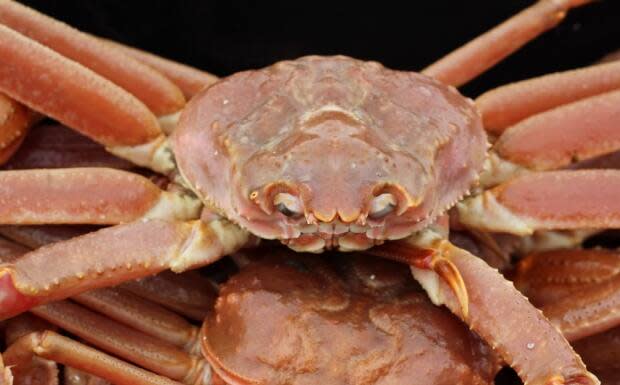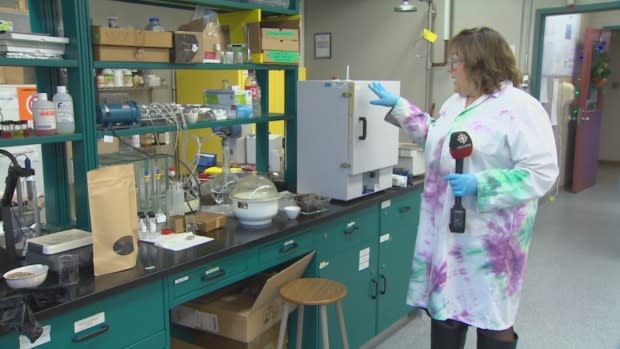CBU researchers discover valuable uses for snow crab carcasses
Snow crab processors in Nova Scotia may have found a way to turn crab waste into cash after a four-year study demonstrated the carcasses can be turned into fertilizer, or used to strengthen concrete, or neutralize acidic wastewater like mine tailings.
That's encouraging news for Louisbourg Seafoods, one of six snow crab processors in Cape Breton, and a partner in the study.
The company trucks 450,000 kilograms of crab waste each year from its processing plant in Glace Bay to a compost facility 200 kilometres away in Guysborough.
"We really want to find a way to do something with the crab waste other than what we're doing with it now," said Allan MacLean, senior operations manager.
"We pay about $35,000 a year to get rid of it this way, so we'd obviously like to save that and if there's a way that we can increase the revenues from the crab waste, that's obviously an important aspect for us."
Why this fishery is so important
Snow crab is one of Atlantic Canada's most lucrative fisheries, creating jobs and pumping money into rural communities.
In 2017, the fishery was valued at $967 million in Atlantic Canada and Quebec.
This year, fishermen in the four Atlantic provinces were allowed a total catch of over 60,000 tonnes (or 60 million kilograms).
One-third of that by weight will be discarded after processors remove the legs and shoulders.
"Hopefully, the waste from all of the processing facilities in Cape Breton gets utilized, other than just going to a composting site," said MacLean.

Louisbourg Seafoods and Cape Breton University chemist Stephanie MacQuarrie teamed up four years ago to investigate other uses for the carcasses.
The research project received around $200,000 from the Natural Sciences and Engineering Research Council of Canada.
MacQuarrie dried and crushed the shells into small particles and then burned the powder in an oxygen-free atmosphere, a process known as pyrolysis.
The result is a charcoal known as biochar.
The burning also produced a bio oil with a high heat value when burned.

MacQuarrie said her lab tests show the unburned powder — which is primarily calcium carbonate — and biochar are both effective fertilizers and can be used as a remediation medium to neutralize acidic water at low doses.
Biochar was tested at two Cape Breton mine tailing sites, where it also removed iron, a common tailings contaminant.
Lab tests also showed biochar may be used as a substitute for fly ash to strengthen concrete.
"I'm excited about this project. We're taking a stream of material that is currently not valuable to the producers — in this case Louisbourg Seafoods — and looking at making a higher-value product that could be used as a replacement in other applications," said MacQuarrie.
Pitching it to industry
This week, MacLean and MacQuarrie presented the results of the research to industry and government at Cape Breton University.
The cannabis industry has also expressed interest, said MacQuarrie.
She's not alone in exploring the possibilities.
Chemists at McGill University in Montreal have converted lobster, shrimp and crab shells into a biodegradable plastic.
Challenges
In the case of biochar from snow crab, there are some challenges.
The season is short, running from April to the end of July, meaning a lot of product comes in at once.
The waste needs to be stabilized quickly and likely processed at a central location, which would require an industrial-scale drying and burning facility.
Upcoming meeting
Cape Breton crab processors will be meeting next week to talk about the research and its potential.
MacLean believes it could pay for itself in two or three years.
"I just think that there's a product here that can be utilized for the benefit of the environment, instead of just strictly going to a landfill site or to a compost site," he said.
MORE TOP STORIES

